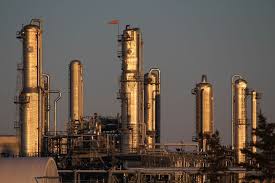China’s first hydrogen-powered city train conducts high-speed tests

Developed by Changchun Railway Vehicles, a subsidiary of Chinese state-owned rolling stock manufacturer CRRC, China’s first hydrogen energy urban train ran a trial run in Changchun, Jilin province, reaching a full load operating speed of 160 kilometers per hour. The hydrogen energy train uses 35 MPa – 165 L hydrogen storage cylinder sets produced by Sinoma Suzhou, a subsidiary of Sinoma Technology. This train adopts a distributed hybrid power supply solution with multiple energy storage and multiple hydrogen energy systems, and applies the hydrogen-electric hybrid energy management strategy and control system. “Each hydrogen energy urban train is equipped with 4 systems. Each system is composed of two 165 L hydrogen storage cylinders. The hydrogen storage capacity of 8 cylinders of 165 L reaches 31 kilograms“, Li Shihong, senior engineer of Sinoma Suzhou, said. Hydrogen energy urban trains use an energy supply method that combines hydrogen fuel cells and supercapacitors to replace the





